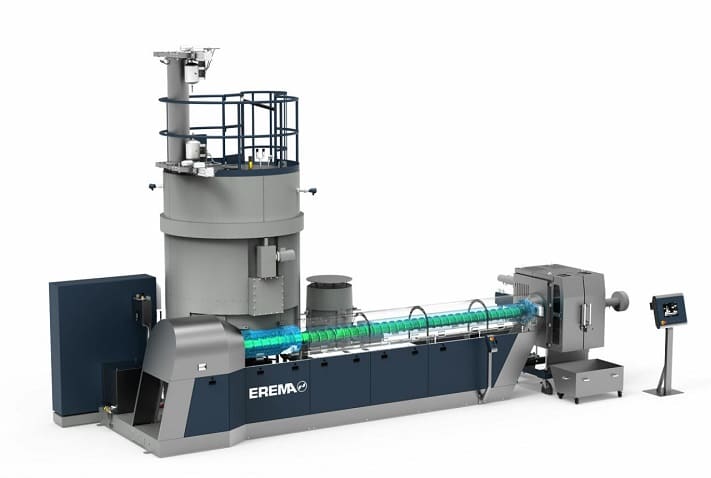Chemical recycling cost – AI new frontier for PET preforms 12-07-2023 - Arhive
Chemical recycling cost
Crude Oil Prices Trend
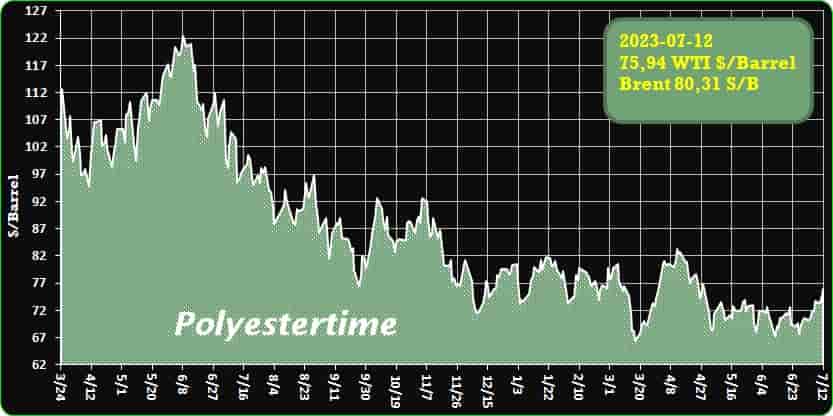
Crude Oil Prices Trend by Polyestertime
Coca-Cola Beverages Africa rolls out clear PET bottles for Dasani
Coca-Cola Beverages Africa (CCBA) in Kenya has accelerated the shift towards sustainable packaging with the introduction of clear plastic bottles for Dasani water.
CCBA, the biggest bottling partner of The Coca-Cola Company in Africa, is setting the pace for the beverages industry as it expands the use of clear PET polyethylene terephthalate (PET) plastic bottles.
To date, CCBA has rolled out Sprite Clear plastic bottles in South Africa, Ethiopia, Kenya, Namibia, Zambia and Tanzania, followed by a switch from light blue to clear PET for Ambo mineral water in Ethiopia, and now Dasani water in Kenya.
Clear PET bottles are easier to recycle than coloured PET bottles which means more plastic bottles will be recycled to make new ones. This is part of Coca-Cola’s World Without Waste vision, which aims to collect and recycle the equivalent of every bottle or can it sells by 2030.
The clear PET plastic also contributes to economic empowerment as it will have more value for waste recyclers who depend on collecting and selling plastic packaging waste for their livelihood.
“Coca-Cola’s World Without Waste initiative represents Coca-Cola’s commitment to doing business sustainably, which includes addressing the packaging waste challenge,” said Public Affairs, Communication and Sustainability Director, John Mwendwa.
“The clear PET can be made into new bottles as well as a wide range of new products, such as pillow and duvet inners, making it more valuable than coloured PET, which has limited uses.
“It is a big step forward in creating a circular economy for plastic waste by giving it value, which in turn incentivises people to collect and recycle which generates income,” Mwendwa said.
As part of its support for the circular economy, CCBA has played a leading role in establishing Producer Responsibility Organisations (PRO) in Kenya, South Africa, Tanzania and Ethiopia….
“Building a circular green economy enables recycling and initiates partnerships with communities and other stakeholders in a collaborative effort, creating sustainable employment at grassroots level and helping to solve the world’s plastic waste problem at the same time,” said Mwendwa.
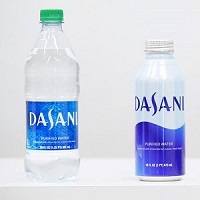
Alba Group Commences Construction of New PET Recycling Plant in Indonesia
Alba Group, a German-based company specializing in materials, recycling, and environmental services, is embarking on a significant project to construct a state-of-the-art PET waste processing facility in Kendal Industrial Park (KIP), located in Central Java, Indonesia. The company is investing approximately €55 million ($60 million) in this venture, aiming to contribute to Indonesia’s mission of curbing plastic leakage into the ocean by 70% by 2025 and reaching near-zero percent by 2040. With an alarming 8 to 12 million tonnes of plastic ending up in the ocean each year, Alba Group is committed to creating a positive social impact by collaborating with local collectors and generating 150 new job opportunities in the region. Chemical recycling cost
Indonesia stands as one of the primary contributors to marine plastic pollution. Alba Group’s project will not only increase the production capacity of food-grade recycled PET (rPET) in the country but also play a significant role in establishing a circular economy for plastics. The construction of the PET waste-processing plant, known as PT Alba Tridi Plastics Recycling Indonesia, is a joint endeavor between Alba Group Asia and Tridi Oasis Group, a recycling company based in Tangerang, Banten. ATPRI, the resulting joint venture, is spearheaded by Dian Kurniawati, the founder of PT Tridi Oasis Group.
The new facility, utilizing cutting-edge technology provided by equipment manufacturers from Asia and Europe, along with Alba’s Interzero brand expertise, will possess the capacity to process 48,000 tons of PET bottles annually. This process will divert plastic waste from landfills, open burning, and leakage into the ocean, preventing further environmental damage. In turn, the plant is expected to produce 36,000 tons of rPET. The director of PT Alba Tridi Plastics Recycling Indonesia, Dian Kurniawati, announced that the facility is set to commence operations in 2025. Chemical recycling cost
Recognizing that Indonesia’s plastic pollution problem necessitates collective efforts, Kurniawati emphasized the importance of multi-stakeholder collaboration, involving the government, civil society, global companies, and financial institutions. She expressed her enthusiasm for the partnership with ALBA, highlighting the company’s commitment to gender-lensed investing. This investment not only addresses the waste issue and generates economic value but also empowers local SMEs and women entrepreneurs. Kurniawati believes that this collaboration sets a significant example of how strategic collaboration among multiple stakeholders can effectively resolve social and environmental challenges.
To fund the construction of the factory, Alba Group Asia secured a $44.2 million blue loan from the Asian Development Bank (ADB) and the Leading Asia’s Private Infrastructure Fund (LEAP). Blue loans are financing instruments designed to promote access to clean water, protect underwater environments, and contribute to a sustainable water economy. Aligned with ADB’s Ocean Finance Framework and its Action Plan for Healthy Oceans and Sustainable Blue Economies, the certified blue loan ensures the project’s adherence to environmentally responsible practices.
Expressing satisfaction with the collaboration, Axel Schweitzer, chairman and owner of Alba Group Asia, commended ADB on this groundbreaking project in Central Java. He reiterated Alba Group Asia’s commitment to a world without waste and expressed excitement about pursuing similar projects in Indonesia and Southeast Asia. Schweitzer looks forward to exploring future opportunities in partnership with ADB.
The groundbreaking ceremony was attended by various dignitaries, including Kendal Regent Dico M. Ganinduto, Assistant for Economics & Development at the Central Java Provincial Government Dr. Sujarwanto Dwiatmoko, Regional Director III Unit Deputy of Investment Control and Implementation Sri Moertiningrum, and Director of Private Sector Operations at Asian Development Bank Jackie Surtani. Chemical recycling cost

Containers: Affordable Shipping from Shanghai to Genoa under $2,000
Container maritime transport rates continue to experience a significant decline in July, with the exception of transpacific routes. TrasportoEuropa, an online magazine, has reported a continuous downward trend in container shipping freight rates based on the latest survey from Drewly’s World Container Index. Chemical recycling cost
In particular, the spot freight per 40-foot unit on the Shanghai to Genoa route has dropped to $1,993, compared to $2,034 in the previous week, now dipping below the psychological threshold of $2,000. Although the weekly decrease is only 2%, the annual decrease reaches an impressive 82%.
This decline in freight rates is not exclusive to the Shanghai-Genoa route; other strategic routes are also experiencing similar trends. For instance, the survey conducted on July 6 shows that the rate between Shanghai and Rotterdam is $1,345, marking an 86% decrease compared to a year ago.
The transatlantic routes have seen a more significant collapse in rates. In just one week, the average freight rate between Rotterdam and New York plummeted by 25%, reaching $2,003, resulting in a 71% decline over the course of a year.
Interestingly, trans-Pacific routes defy the overall trend. TrasportoEuropa notes that freight rates between Shanghai and Los Angeles increased by 4% within a week (although the annual balance reflects a 78% decrease), with rates amounting to $1,638. Similarly, rates between Shanghai and New York rose by 3% (with a 75% annual decrease), reaching $2,590. Chemical recycling cost
The composite index, which provides an overview of all routes, reveals a 1% decline, indicating an average freight rate of $1,474.
These falling freight rates offer significant benefits to businesses involved in container shipping. The reduced costs on the Shanghai-Genoa route, now under $2,000, provide a considerable advantage for importers and exporters, enabling them to transport goods at a lower expense. Furthermore, the decline in rates on other key routes, such as Shanghai-Rotterdam and Rotterdam-New York, opens up opportunities for companies to expand their trade activities and increase profitability. Chemical recycling cost
It is important to note that the reasons behind the declining rates vary. Market dynamics, changes in global trade patterns, and the availability of shipping capacity all play a role. Additionally, factors like geopolitical developments and economic conditions can influence the supply and demand balance in container shipping, impacting freight rates.
In conclusion, container shipping freight rates continue to experience a downward trend, with significant drops observed on key routes. The Shanghai-Genoa route, in particular, now offers shipping at a cost below $2,000 per 40-foot unit. This favorable environment presents opportunities for businesses to optimize their shipping strategies, reduce expenses, and enhance their competitiveness in the global market.
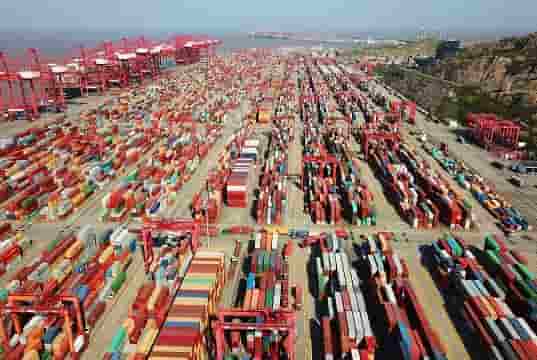
Artificial Intelligence, the new frontier of SACMI Computer Vision
SACMI presents the first complete system for the on-line identification of abnormal stress on preforms via a combination of polarised light and advanced AI algorithms
Customers and markets are demanding ever-more sophisticated inspection performance to ensure constant maximisation of output quality and allow real-time resolution of any potential deviation from production standards.
The solution? Computer Vision by SACMI, which the company will present this year at the K fair in Düsseldorf, starting with a cutting-edge application that executes on-line preform quality control using polarised light. Chemical recycling cost
Generally used to identify abnormal stress on preform surfaces, polarised light inspection previously had the drawback of being impossible to perform directly on-line because traditional algorithms were not up to the task. SACMI has now succeeded in replacing traditional sampling checks – performed manually on test benches – with a fully automated control system that works in combination with advanced AI algorithms.
The fair will showcase the PVS10L, equipped with the new, SACMI control system. With the PVS10L, in fact, the preform line is transformed into a system that can simply and quickly “self-learn” all the required checks. This simplifies QC procedures and improves working conditions for operators, who can work directly on the line without having to manually set inspection recipes, the complexity of which reflects the growing sophistication of the products and customers’ changing needs. Chemical recycling cost
SACMI’s computer vision range depends on the drive to develop algorithms reliable enough to automate such tasks. That approach is becoming the standard in various fields and is leading to the development of new applications and other products and/or stages of the production process.
The ultimate goal is to boost quality control, extending it from inspection of every individual product to government of the entire production process, thus maximising line efficiency by objectively identifying – without variables that depend on human intervention – the problem type and its origin.
Development of AI algorithms – used together with traditional video camera inspection techniques – is also being driven by the need to simplify the system.
This results in a dual advantage: the possibility of fielding new checks and, at the same time, simplifying the checks themselves with systems that can self-learn and thus respond to the most complex inspection needs of the plastics and metal graphics industries while minimising waste and optimising process costs.
Discover all the latest from SACMI at the international K 2019 fair HALL 13 – 13 A 63 (Düsseldorf, 16-23 October). Chemical recycling cost
Sustainability by SACMI.

Recycling PHA made easier, according to new study
A recent Italian-American study has discovered innovative methods for synthesizing polyhydroxyalkanoates (PHA) with enhanced physical properties that can be easily recycled through depolymerization. Researchers from the University of Naples Federico II, in collaboration with the group led by Professor Eugene Chen at Colorado State University, have made significant progress in the field of PHA recycling.
The study, titled “Chemically circular, mechanically tough, and melt-processable polyhydroxyalkanoates,” focuses on the synthesis of PHA-based bioplastics that are both compostable and recyclable. By modifying the molecular structure of PHAs, the researchers aim to maintain their properties and workability while addressing the limitations of traditional PHAs. Chemical recycling cost
Traditionally, PHAs are produced through bacterial synthesis, but this study demonstrates that they can also be synthesized in the laboratory via catalytic polymerization reactions. This method offers the advantage of generating polymers with diverse molecular structures, allowing control over molecular mass, microstructure, reactivity, and functional properties that bacteria cannot achieve.
Both biologically synthesized PHAs and chemically synthesized ones have limitations in terms of physical properties, hindering their widespread industrial application. Additionally, while they are biodegradable, they are not chemically recyclable back into their starting monomers. Chemical recycling cost
The researchers attribute the poor physical properties and thermal instability of PHAs to their molecular structure, specifically the presence of hydrogens near the carbonyl group. At high temperatures, these hydrogens promote a degradation reaction that leads to the formation of low molecular mass by-products, resulting in a significant decrease in melt viscosity during processing.
In their study, the researchers describe the synthesis of new PHAs with modified molecular structures using appropriate organic catalysts. By replacing the hydrogen atoms responsible for thermal degradation with alkyl groups, the resulting polymer becomes stable at high temperatures and can be processed in the molten state.
The modified PHAs were synthesized through polycondensation of 3-hydroxy-2,2-dimethylbutyric acid (obtained from glucose) or through ring-opening polymerization of the corresponding lactone. Mild and commercially available organic catalysts were used in both cases. Furthermore, these polymers can be easily depolymerized back into hydroxyacid or the starting lactone by treating them with different strength bases at high temperatures. Chemical recycling cost
The improved thermal and mechanical properties observed in these new PHAs are mainly attributed to their ability to crystallize even in the absence of perfect stereoregularity. This unique characteristic allows for the synthesis of high-performance PHAs without the need for specifically designed stereoselective catalysts.
The researchers studied the crystalline structure, which plays a crucial role in determining the properties of PHAs, using a combination of X-ray diffraction techniques and computational methods based on Density Functional Theory (DFT). This research enabled them to identify the possible conformations of isotactic and atactic macromolecules in the crystalline state and explain the materials’ ability to crystallize regardless of structural regularity.
This form of crystallization, independent of structural disorder, allows for the regulation of thermal properties dependent on stereoregularity without compromising the mechanical strength, which relies on crystallinity. Stereoregular polymers exhibit a higher melting point compared to stereoirregular polymers, but both types demonstrate excellent mechanical strength. Chemical recycling cost
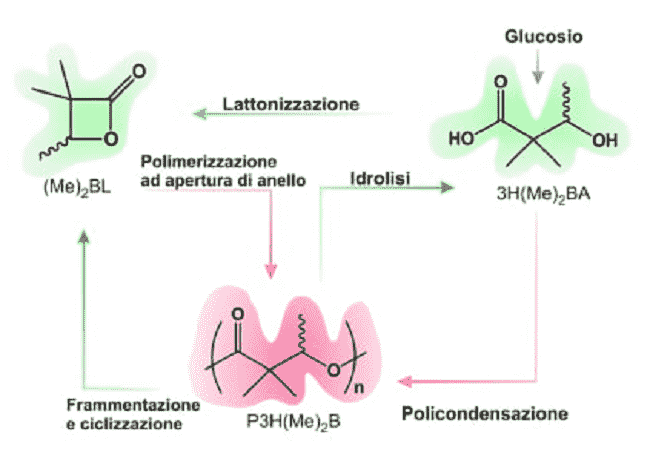
Coca-Cola, the beverage giant, is working towards incorporating a minimum of 50% recycled content in its packaging by 2030, aligning with its commitment to building a sustainable future
The company recently made headlines by introducing 100% recycled PET (rPET) bottles for its packaged water brand, Kinley, in India. To ensure the safety of the recycled plastic material used in their packaging, Coca-Cola follows strict protocols and employs advanced technologies approved by global federations such as the US Food and Drug Administration (FDA), the European Food Safety Authority (EFSA), and the Food Safety Standards Authority of India (FSSAI). Chemical recycling cost
The production process for rPET bottles involves transforming food-grade recycled polyethylene terephthalate (PET) through approved technologies into recycled PET resin, which is then converted into PET bottles. The approval from FSSAI to use recycled PET in food packaging was obtained after adhering to FSSAI guidelines and undergoing a comprehensive review of food safety. By incorporating recycled materials in their packaging, Coca-Cola aims to promote sustainability and reduce environmental impact.
India, with its immense potential and rapid infrastructural development, holds great significance as a market for Coca-Cola. The company has seen growth in its customer base by emphasizing the accessibility and affordability of its products, recording over three billion transactions in the first quarter of 2023. Ackermann, the vice-president of technical and innovation at Coca-Cola India and Southwest Asia, highlights the company’s commitment to business endeavors and substantial investments made in the region.
Coca-Cola Bangladesh led the way in the Southwest Asia region by launching 100% rPET bottles for Kinley water in two-liter packages in December 2022. Following this successful launch, the company expanded the use of rPET bottles to the Indian market, offering 1-liter Kinley bottles. This expansion showcases Coca-Cola’s dedication to implementing sustainable packaging solutions across different markets. Chemical recycling cost
Globally, Coca-Cola now provides 100% rPET bottles in over 40 markets, emphasizing its commitment to using recycled materials and minimizing environmental impact. The company aims to create a more sustainable future by continuously expanding the use of rPET bottles.
In the packaging industry, Packaging South Asia, a multi-channel B2B publication and digital platform based in New Delhi, India, provides regular coverage of the impact, resilience, and growth of responsible packaging in the region. Despite ongoing challenges, the packaging industry in India and Asia has demonstrated resilience, with growth surpassing the country’s GDP growth even when accounting for inflation over the past three years. Chemical recycling cost
The capacity for flexible film manufact uring in India has increased by 33% in the past three years, and further growth of 33% is expected from 2023 to 2025. Capacities in monocartons, corrugation, aseptic liquid packaging, and labels have also witnessed similar growth. The positive numbers extend to most economies in the region, and Packaging South Asia’s platform continues to reach and influence these markets.
Despite supply chain disruptions, raw material price fluctuations, and the challenges of responsible and sustainable packaging, the packaging industry in India and Asia has significant potential for growth. Packaging South Asia covers the entire packaging supply chain, from concept to shelf, waste collection, and recycling, targeting various stakeholders such as brand owners, product managers, raw material suppliers, packaging designers and converters, and recyclers. Chemical recycling cost
With its impactful and highly targeted business platform, now is the opportune time for businesses to plan their participation and marketing support. Interested parties are encouraged to reach out to the editorial and advertising teams at Packaging South Asia to discuss their needs and requirements.
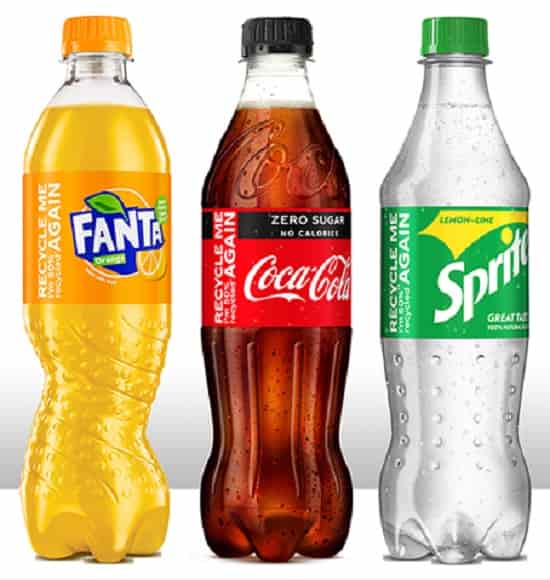
A comprehensive study conducted by Systemiq, a system change company, has outlined a roadmap for achieving circularity in polyethylene terephthalate (PET) packaging and polyester textiles in Europe
PET packaging and polyester textiles are commonly made from the same plastic molecule and constitute a significant portion of consumer packaging and synthetic textiles in Europe. Currently, these materials are primarily produced using virgin feedstocks derived from fossil fuels, and the majority of PET/polyester waste ends up in landfills or is subject to energy recovery after just one use. Chemical recycling cost
The study emphasizes the transformative potential of adopting ambitious circular economy approaches, including demand reduction, reuse, mechanical recycling, and chemical recycling. By implementing these measures by 2040, it is estimated that overall PET/polyester consumption could be reduced by one-third, waste volumes destined for landfill or incineration could decrease by approximately 70%, and greenhouse gas emissions could be cut in half compared to historical trends. Furthermore, the supply of recycled content would be sufficient to meet the requirements of the draft Packaging and Packaging Waste Regulation (PPWR). These initiatives could also generate 28,000 net new jobs and yield an additional €5.5 billion per year in revenues for recycling industries.
The study, titled “Circular PET and Polyester: A circular economy blueprint for packaging and textiles in Europe,” identifies six priority actions necessary to transform the PET/polyester system. These actions aim to slow down consumption growth, establish complementary mechanical and chemical PET/polyester recycling systems, and significantly increase recycling rates and the availability of high-quality recycled PET/polyester. Chemical recycling cost
The release of the study is timely, aligning with the implementation of the EU’s Single-Use Plastics Directive and the development of the draft PPWR. This report is the second in a series exploring circular economy pathways for PET/polyester in Europe, building upon the first report’s findings with comprehensive modeling and an action plan for stakeholders. The study was developed under the guidance of an independent Steering Group consisting of experts from the public sector, academia, civil society, and industry. It was commissioned and funded by Eastman and Interzero.
Ben Dixon, Partner and Head of Materials and Circular Economy at Systemiq, expressed optimism about the potential of building a circular PET/polyester system, given the emerging recycling technologies, ambitious recycling targets, and increased demand for recycled polyester from PET bottles in the European market. He emphasized the need to scale up investment and action to realize this vision.
Professor Kim Ragaert, Chair of Circular Plastics at Maastricht University, highlighted the report’s quantification of the circularity potential of the PET/polyester system, emphasizing that further innovation and strategic systemic choices, such as restricting fast fashion, are necessary to achieve Europe’s net-zero commitment by 2050. Chemical recycling cost
Sandeep Bangaru, VP of Circular Economy Platforms at Eastman Chemical Company, stated that the report demonstrates the feasibility of a highly circular and lower emission future for PET/polyester in Europe. He emphasized the importance of scaling up infrastructure for chemical PET recycling alongside increased mechanical recycling volumes, as it expands the range of PET/polyester products that can be recycled and enhances system resilience.
Joan Marc Simon, Director-Founder at Zero Waste Europe, asserted that the study confirms the importance of the reduce-reuse-recycle hierarchy, with reduction and reuse taking precedence in increasing PET/polyester circularity. However, he also noted that current regulations, such as the PPWR and EU Textiles Strategy, need to be strengthened and clarified to align with the recommendations outlined in the study.
The full study, “Circular PET and Polyester: A circular economy blueprint for packaging and textiles in Europe,” is available for download. Chemical recycling cost
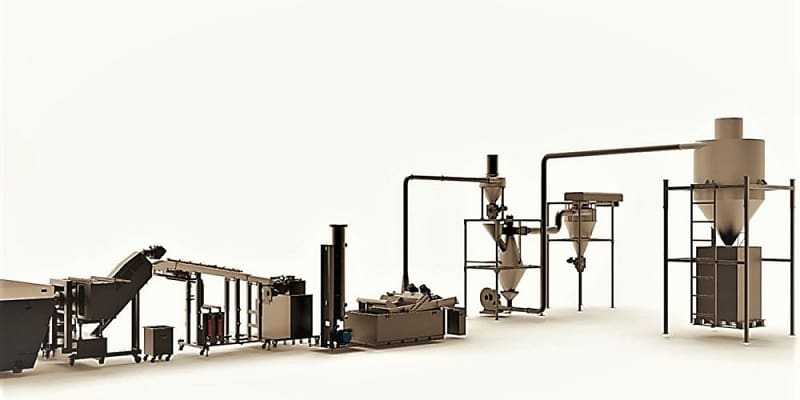
Chemical recycling will not be cheap for the Erema CEO
But it could be a useful complement to the mechanical one to treat the residual fractions of waste according to the German manufacturer of recycling plants.
In an interview conducted and disseminated by the German association VDMA – which also welcomes the group of manufacturers of machines for the recycling and transformation of plastic materials – Manfred Hackl and Klaus Lederer, respectively CEO and Business Development Manager of the German Erema Group (plants for the recycling of plastics) address the delicate issue of the relationship between mechanical and chemical recycling. Given the interest of the topic, we reproduce the full text of the interview, remembering that it is not the result of our journalistic work. Chemical recycling cost
The mechanical recycling processes are mature, the chemical one is relatively young. But will he be able to assert himself?
Klaus Lederer : There are signs that this will happen and the demand is not lacking. Big brands need solutions for their packaging, public pressure is mounting and EU recycling targets are very high. Chemical recycling could contribute in this sense; however, some open questions remain. A challenge consists, for example, in having adequate input material, in terms of quality, quantity and location.
Some chemical recyclers will be able to solve this problem, some will not. At the moment it is not even clear whether chemical recycling makes economic sense. Those who expect the recycled materials thus obtained to be cheaper than virgin materials will be disappointed. However, if it is considered a value to keep the raw material within the production cycle, even if it is expensive and energy intensive, chemical recycling can still make sense. There are also currently many pros and cons regarding the question of whether chemical recycling is good for the environment. Chemical recycling cost
For a more accurate assessment we will have to wait for the first commercial-level plants to be operational.
Some say that chemical recycling consumes much more energy than mechanical recycling, others disagree. What is your opinion?
Lederer: It’s a question of perspective. If we state that plastic is an energy carrier and that a large part of the required process energy can come from the plastic itself, then the energy consumption is lower than is often claimed. But if we agree that much more energy is needed compared to mechanical recycling, for example to feed the pyrolysis process; and if we consider that at the end of the process we go back to the beginning of the value chain, i.e. crude synthetic oil, which must be further transformed using energy, it cannot be argued that chemical recycling does not consume much more energy than mechanical recycling.
Manfred Hackl : An honest analysis of the processes would immediately and clearly show that the energy input is higher in chemical recycling. In the mechanical one, a temperature of 250°C is required for washing and extrusion, after which a finished granule is obtained. In chemical recycling, the energy required to decompose the raw material into its basic components and then to recombine them is much higher. Chemical recycling cost
Much research is being carried out in the field of mechanical recycling to constantly improve the quality of regenerated materials. Will research become obsolete if all raw materials can still be broken down into their starting components through chemical recycling?
Hackl: We don’t see it that way at all. A lot has happened in mechanical recycling in recent years, also because the whole industry is developing activities jointly. This has made it possible to create solutions that were unthinkable until a few years ago. The quality of the recycled granule now allows very demanding applications. Furthermore, mechanical recycling is already a functioning business model, which makes both environmental and economic sense. It is efficient and scalable. Therefore, I don’t see why mechanical recycling could be made obsolete by chemical recycling. We will also see further developments in the field of mechanical recycling.
For example, in Erema, at our headquarters in Ansfelden, we started up the new research and development center for mechanical recycling in June, with an investment of 10 million euros. Chemical recycling cost
However, chemical recycling finds justification for certain waste streams that mechanical recycling cannot handle.
Which subdivision of tasks would therefore make sense in the future, according to his point of view?
Lederer: The goal must be to integrate the two technologies, so that chemical recycling handles materials that cannot be recycled mechanically. For example, mixed plastics such as multilayer films or fibre-reinforced composites, or materials intended to come into contact with food. If chemical recycling manages to treat lower quality materials and bring them back into the cycle, then we would have added value. The division of tasks would thus have the aim of avoiding waste. If this is not possible, mechanical recycling comes into play and – only when this reaches its limits – does a possibility open up for chemical recycling. This hierarchy makes sense because chemical recycling is more expensive and requires more energy. At Erema, we seek to support chemical recyclers with our extrusion technologies so that they can process potentially difficult-to-manage waste streams reliably and energy-efficiently in their chemical recycling process. In this way, we make an important contribution to the development of chemical recycling, so that it can become an effective complement to mechanical recycling. Chemical recycling cost
So Erema supplies machinery for both processes. Where do you see the potential for each?
Hackl: We already offer the entire process technology for mechanical treatment. Based on the significant increase in demand over the past two years, we can see how dynamically this industry is developing.
For chemical recycling, we provide a mechanical treatment technology which is often applied at the beginning of the process to prepare the input streams. We see a lot of potential in this area and have already received several orders. However, at the moment the numbers are still relatively low because few large chemical recycling plants have been completed globally to date. In any case, our desire is to develop both potentials.
Will the transition to a circular economy be accelerated by chemical recycling?
Hackl: This will happen in the medium or long term, but chemical recycling can already today contribute to improving the image of plastics, since it will be possible to recycle a much higher number of types. Chemical recycling cost
